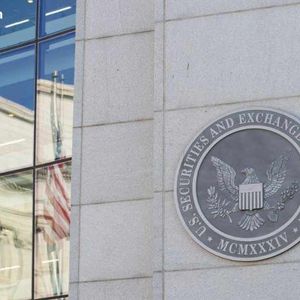Market Pulse
The U.S. Securities and Exchange Commission (SEC) is facing increasing pressure to reject Nasdaq’s ambitious proposal to launch a tokenized securities platform. Critics, primarily investor advocacy groups, are sounding the alarm over potential transparency gaps and the broader implications for market integrity. This development highlights the ongoing tension between financial innovation driven by blockchain technology and the imperative for robust regulatory oversight in traditional markets.
Nasdaq’s Vision for Digital Assets
Nasdaq, one of the world’s leading stock exchanges, has put forward a plan to leverage blockchain technology for the issuance and trading of tokenized securities. This initiative is part of a broader trend among legacy financial institutions exploring how distributed ledger technology (DLT) can streamline operations, reduce settlement times, and enhance efficiency across capital markets. The proposed platform aims to bring the benefits of tokenization, such as fractional ownership and automated compliance, to traditional assets.
- Efficiency Gains: Blockchain could dramatically reduce manual processes and accelerate post-trade settlement.
- Enhanced Accessibility: Tokenization may allow for broader investor participation through fractionalization.
- Innovation Drive: Nasdaq’s move signifies a major traditional player’s commitment to integrating DLT.
Mounting Transparency and Integrity Concerns
Despite the potential benefits, influential advocacy groups, notably Better Markets, have formally urged the SEC to disapprove Nasdaq’s proposal. Their primary concern revolves around a perceived lack of transparency and the potential for a two-tiered market structure that could disadvantage retail investors. Critics argue that without clear, established rules and robust safeguards tailored specifically for tokenized securities, the platform could become an opaque environment vulnerable to manipulation and unfair practices.
Key concerns highlighted include:
- Information Asymmetry: Worries that certain market participants might gain an unfair informational advantage.
- Regulatory Arbitrage: Fears that the new structure could allow evasion of existing securities laws.
- Market Fragmentation: The creation of parallel markets with different rules and oversight standards.
- Investor Protection: Calls for clear mechanisms to protect individual investors in a novel and complex market.
The SEC’s Balancing Act
The SEC finds itself in a familiar position, tasked with balancing the promotion of innovation against its mandate to protect investors, maintain fair, orderly, and efficient markets, and facilitate capital formation. The commission’s decision on Nasdaq’s proposal will set a significant precedent for how major exchanges integrate blockchain into their core operations. Past decisions, such as the lengthy deliberation over Bitcoin spot ETFs, underscore the regulator’s cautious approach to new financial products involving digital assets, especially when transparency and liquidity are at stake.
Broader Implications for Digital Finance
A rejection or significant delay of Nasdaq’s tokenized securities plan could have ripple effects across the nascent digital assets space, particularly for real-world asset (RWA) tokenization efforts. While not directly RWA tokenization, tokenized securities share fundamental characteristics. It could signal a more stringent regulatory posture from the SEC towards blockchain integration in mainstream finance, potentially slowing down institutional adoption and innovation in the short term. Conversely, an approval, coupled with robust oversight, could pave the way for a more confident embrace of DLT by traditional financial giants.
Conclusion
The debate surrounding Nasdaq’s tokenized securities proposal encapsulates the broader challenges and opportunities at the intersection of traditional finance and blockchain technology. The SEC’s ultimate decision will not only determine the immediate future of Nasdaq’s initiative but also cast a long shadow over the regulatory pathway for other financial institutions looking to innovate with digital assets. It’s a critical juncture that will test the regulator’s ability to foster innovation while rigorously upholding its core mission of investor protection and market integrity.
Pros (Bullish Points)
- Increased investor protection through more rigorous regulatory oversight of novel financial products.
- Establishes clearer, more robust market rules before widespread adoption of tokenized securities.
- A cautious approach ensures stability and mitigates risks inherent in emerging technologies.
Cons (Bearish Points)
- Potential stifling of innovation in traditional finance's adoption of blockchain technology.
- Delays in leveraging blockchain's efficiency benefits for securities issuance and trading.
- Could limit institutional entry and the broader maturation of the tokenized assets market.



